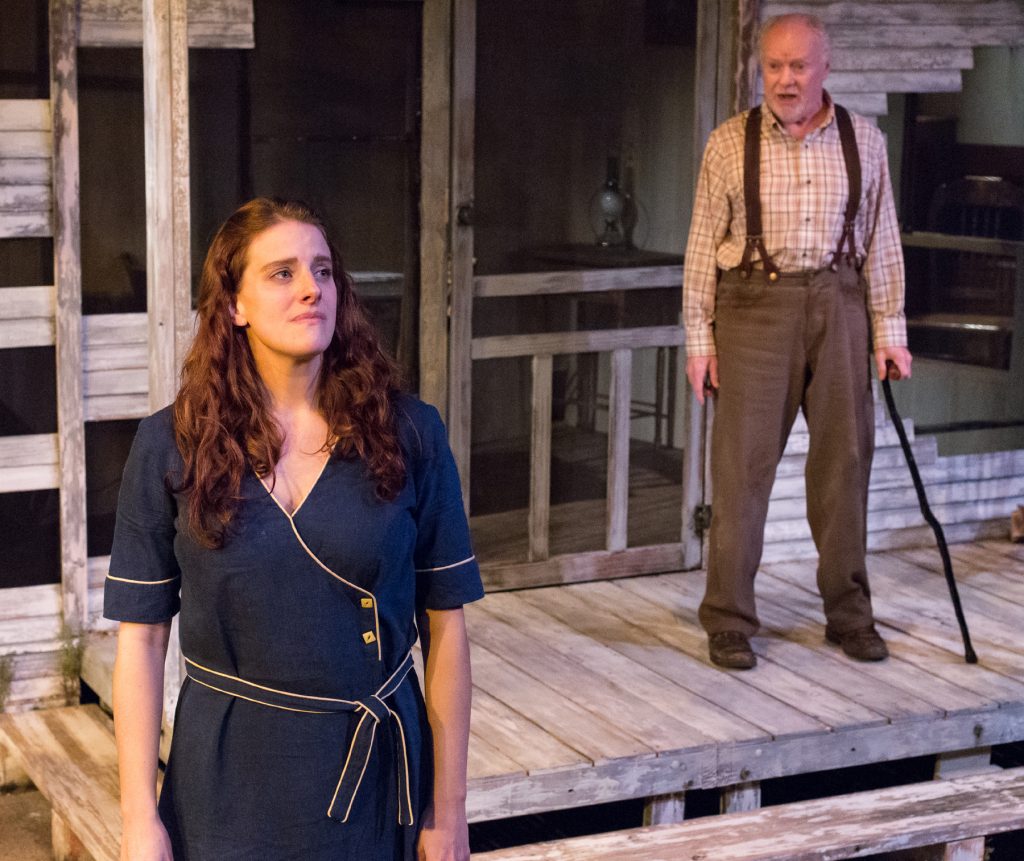REVIEW: A Moon for the Misbegotten
Many people believe Jude is the patron saint of lost causes — for me, it’s Eugene O’Neill.
No one wrote more eloquently and compassionately about small lives, constrained circumstances, lost pasts and uncertain futures. O’Neill is an exception among American playwrights, many of whom wrote their most famous and important works early on — although he won two Pulitzers in the 1920s, and the Nobel in 1936, O’Neill’s greatest work came late in his career.
Moon for the Misbegotten, written in 1942-43, is the last play he completed. It takes some time to get started — the early scenes are bogged down with contrived exposition — but wait for it: transcendent grandeur arrives in the second half.
Moon isn’t an easy play to categorize. In some ways, it’s small-scale — three central characters, one setting (a dilapidated Connecticut house), and more talk than action. At its heart is an extended conversation between two broken people finding passing comfort in each other’s company. One is Josie Hogan, the ungainly daughter of an alcoholic tenant farmer, Phil Hogan; the other is James Tyrone, Jr., the ne’er-do-well son of a once successful actor. (This is the same Jamie Tyrone who is a central character in Long Day’s Journey Into Night; Moon demonstrates, among other things, that Jamie is every bit as lost away from his family as he was in their suffocating grasp.)
But Moon for the Misbegotten is also huge. It’s a long play (two hours and 30 minutes here, including an intermission) and, more important, epic in the size and scale of its emotional power. When it works its magic, by the end, audiences feel absolutely wrung out.
The tiny Walnut Studio space certainly makes for an intimate connection to the action, but initially, that intimacy — and the rather jaunty tone of Kate Galvin’s direction — feels too casual.
As Moon goes on, Galvin’s production grows in stature and gravitas, aided by a fine and, in some cases, exceptional cast. First, actor Michael Toner (Phil) makes a triumphant return to the stage, seven months after a debilitating accident, but with his talent undiminished. Everything about Toner’s performance, including his Irish accent, has the ring of authenticity. Anthony Lawton (James) understands the critical duality at the heart of the character, capturing both the surface bonhomie and the haunted, fearful emptiness with unerring skill.
Initially, I was less convinced by Angela Smith as Josie. O’Neill describes the character as physically imposing (“so oversize… that she is almost a freak”), and Josie’s emotional life is similarly vast. She’s at once an earth mother, spinster, hoyden, confessor, and voice of the disenfranchised. Smith, an attractive, fit-looking young woman, is far from the outcast O’Neill describes, and I found her work in the early scenes appealing but without much sense of underlying darkness.
But in the harrowing final act, Smith reveals heartbreaking layers. The same can be said about this Moon for the Misbegotten as a whole — when the play reaches greatness, the production (to paraphrase an Irish proverb) rises to meet it.
A Moon for the Misbegotten runs through February 7. For more information, visit Walnut Theatre/Independence Studio.



